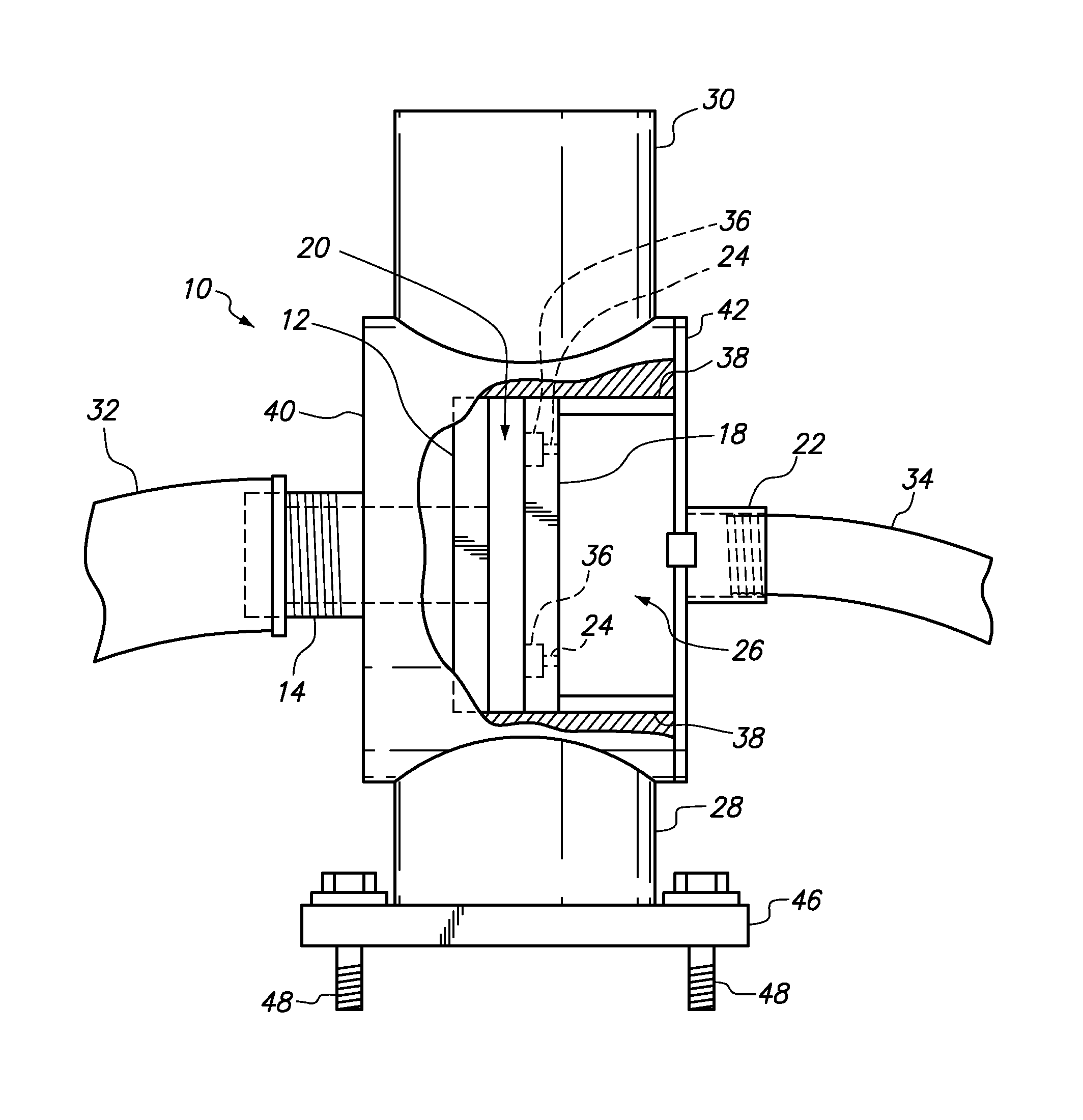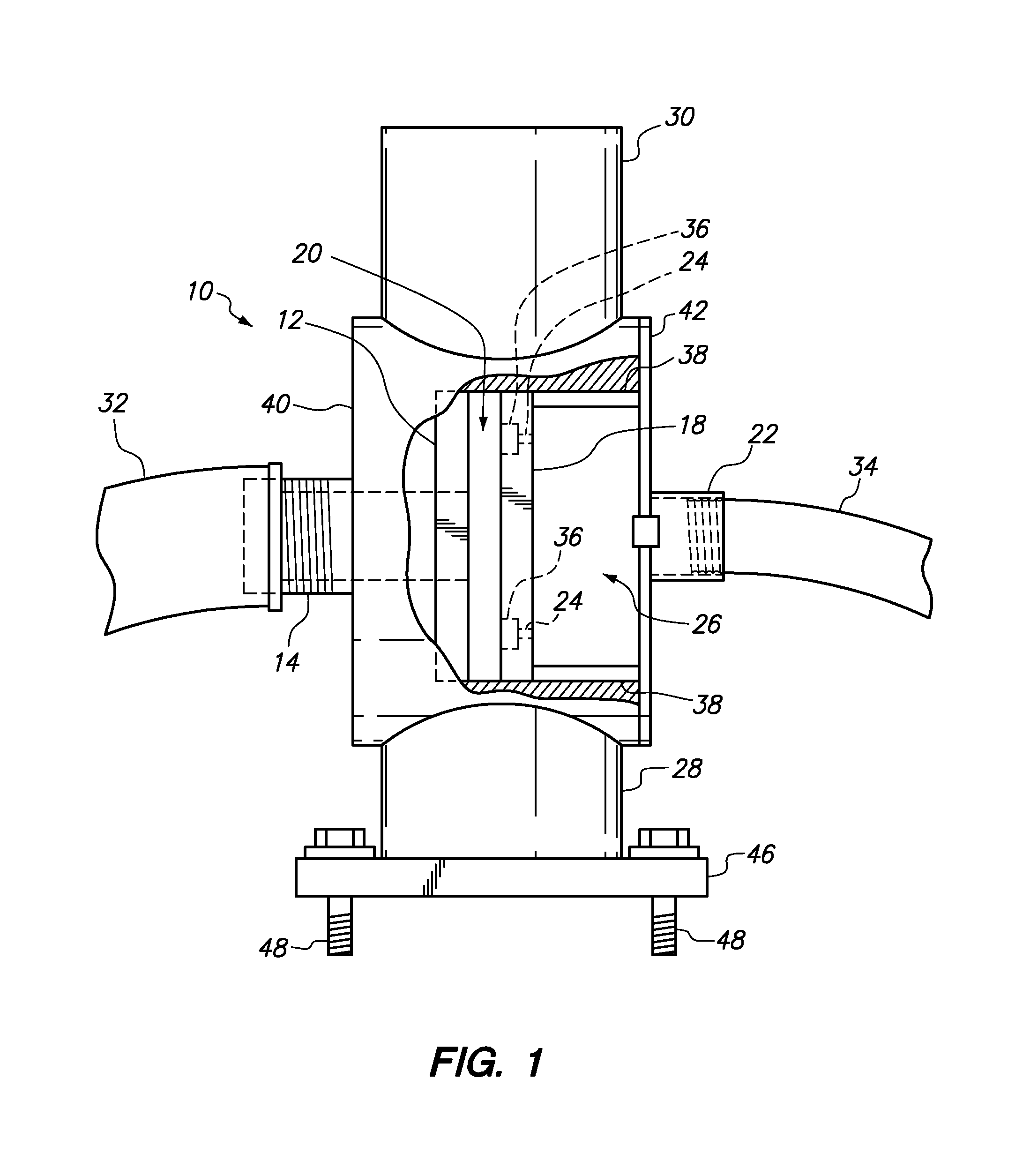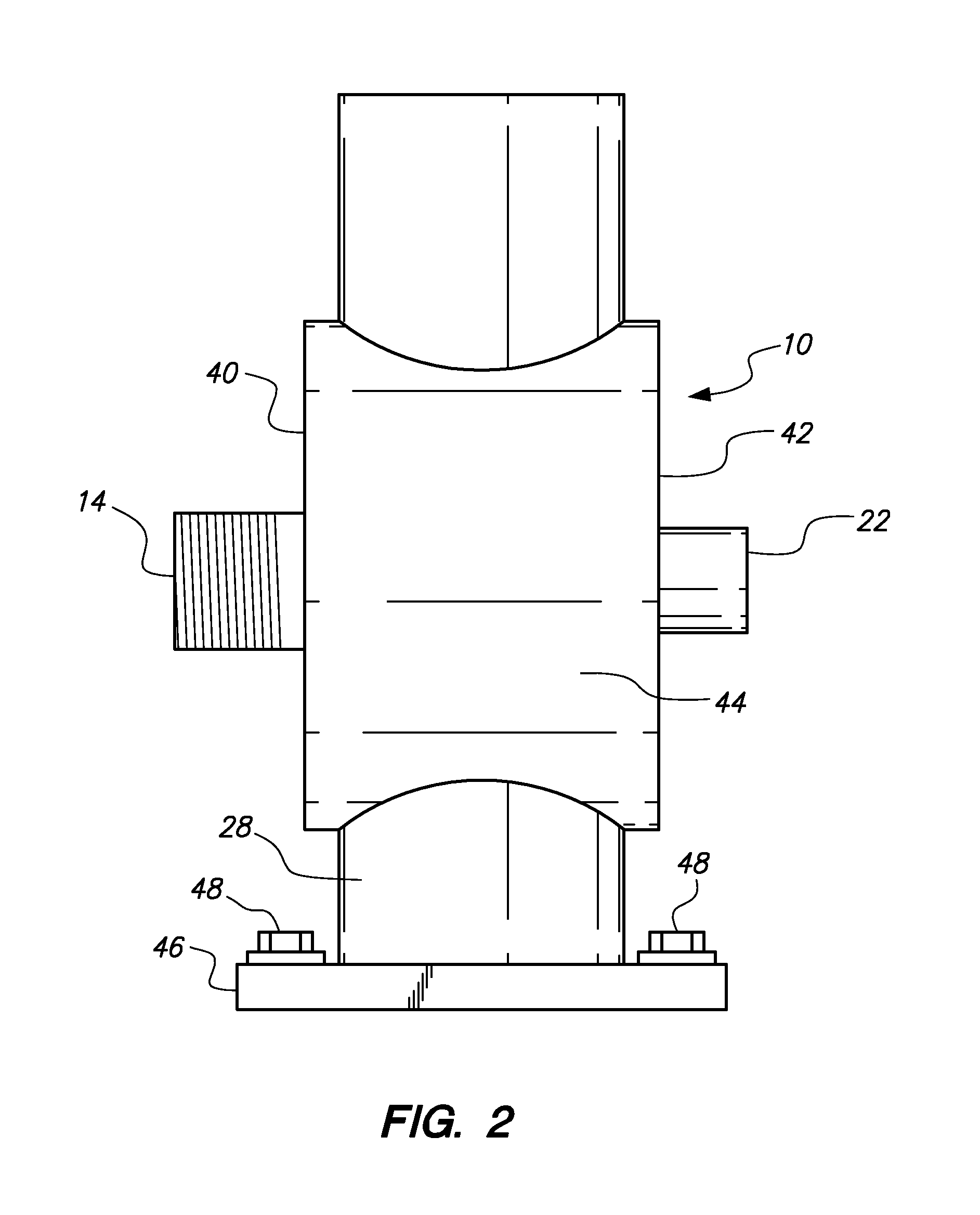Foam generating apparatus and method for compressed air foam systems
a technology which is applied in the field of foam generating apparatus and compressed air foam system, can solve the problems of low foam quality, low foam quality, and the cost of retrofitting existing water-based systems to oafs equipmen
- Summary
- Abstract
- Description
- Claims
- Application Information
AI Technical Summary
Benefits of technology
Problems solved by technology
Method used
Image
Examples
Embodiment Construction
[0013]The preferred embodiment of the present invention may now be described with reference to FIGS. 1 and 2. A mixing chamber 10 serves as the location where the mixing of solution and air takes place in order to produce CAFS foam. Chamber 10 is preferably mounted on a firefighting vehicle, although the invention is not so limited. Chamber 10 is of a generally cylindrical shape, having a circular first end 40, a circular second end 42, and an annular sidewall 44. Each of circular first end 40, circular second end 42, and annular sidewall 44 may collectively be referred to as the “chamber wall” herein. Chamber 10 is preferably formed entirely of a strong, rust-resistant metal alloy, such as stainless steel, although brass and other materials may be substituted in alternative embodiments.
[0014]Solution inlet 14 passes through first end 40 of chamber 10, and allows for the introduction of solution into chamber 10. The solution is fed to solution inlet 14 through solution hose 32. Outs...
PUM
 Login to View More
Login to View More Abstract
Description
Claims
Application Information
 Login to View More
Login to View More - R&D
- Intellectual Property
- Life Sciences
- Materials
- Tech Scout
- Unparalleled Data Quality
- Higher Quality Content
- 60% Fewer Hallucinations
Browse by: Latest US Patents, China's latest patents, Technical Efficacy Thesaurus, Application Domain, Technology Topic, Popular Technical Reports.
© 2025 PatSnap. All rights reserved.Legal|Privacy policy|Modern Slavery Act Transparency Statement|Sitemap|About US| Contact US: help@patsnap.com



